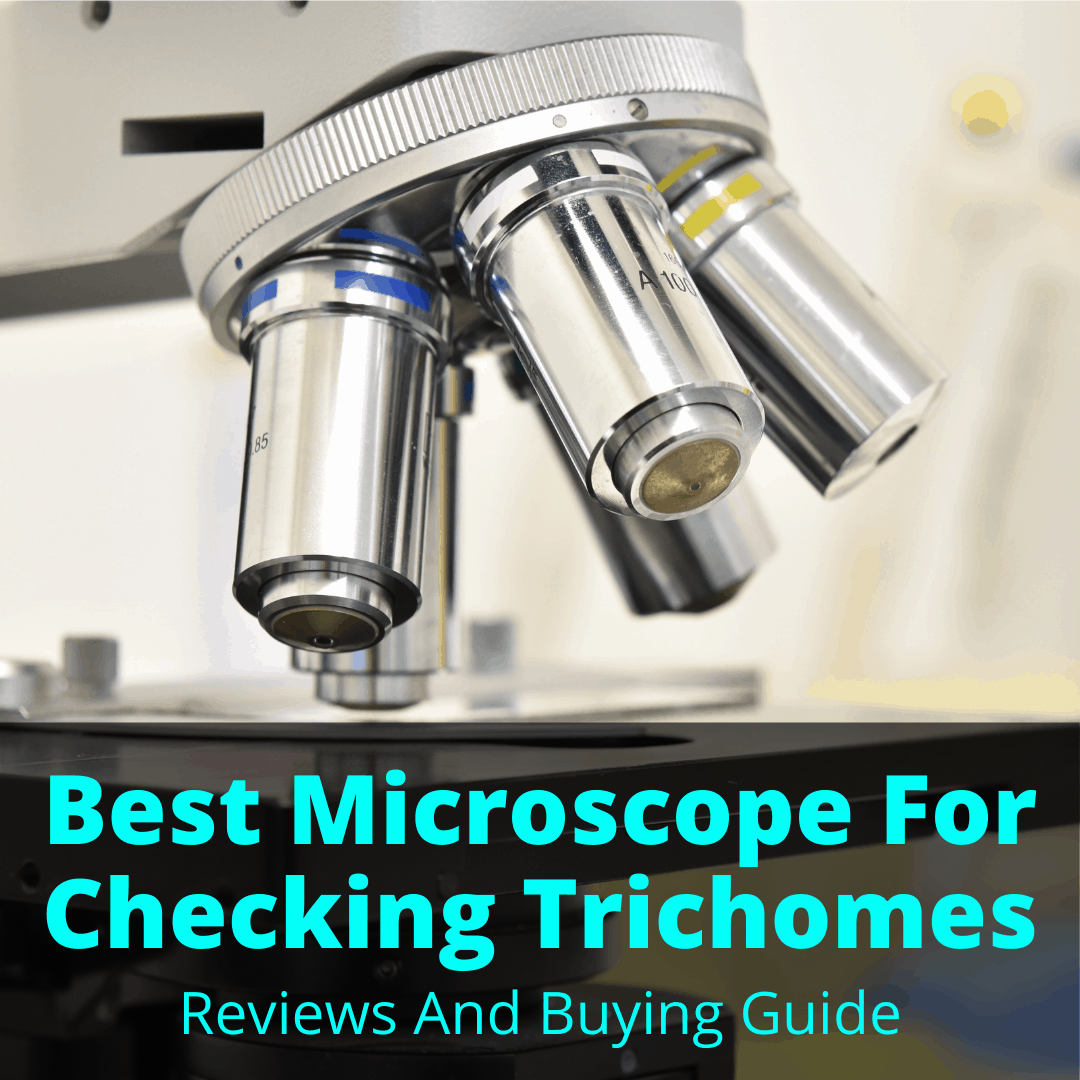
But you can’t see enough details to get the information you need from them.
This means you need to examine them under a microscope, which probably conjures up images of those old-school monstrosities we all used back in biology class.
But things have changed. A lot.
These days, you can get huge magnification and great image quality in a portable, hand-held microscope. And for a low price.
But there are a ton of poorly made models on the market. That’s why we’ve narrowed down the options to only the best microscope for checking trichomes.
We’ll start with a quick comparison of our five favorite models, before going a bit deeper with brief reviews of each.
Contents
- 1 Best Microscopes To Check Trichomes Compared
- 2 Best Microscope For Checking Trichomes: Reviews
- 2.1 Best Overall: T Takmly Handheld Wireless Digital Microscope
- 2.2 Highest Quality: Celestron LCD Digital Microscope II
- 2.3 Best Budget Microscope: Carson MicroBrite Plus
- 2.4 Best Budget LCD Microscope: Yvelines 7 Inch LCD Digital Microscope
- 2.5 Best Phone Microscope: Apexel 100X Pocket Size Mobile Phone Microscope
- 3 Trichome Microscope Buying Guide
- 4 Best Microscope To View Trichomes: Final Thoughts
Best Microscopes To Check Trichomes Compared
Best Microscope For Checking Trichomes: Reviews
The following are the five best microscopes for cannabis growers to check trichomes. For most people we recommend the first two. If money is no object and you don’t need a portable model, get the second one.
If you are on a bit of a budget or you want one you can take into the garden and inspect buds on the plant, get the first.
If you are on a deep budget, go with the third, but know that the step down in quality is huge. The final two options are far more specialized, so they will only appeal to a few people with specific needs.
Best Overall: T Takmly Handheld Wireless Digital Microscope
- Versatile: microscope and camera
- Portable: can travel with you easily
- Quality: HD image quality
- Dimmable: lights can be dimmed
- Not expensive: Not as expensive as it could be
- The stand and tip seem like cheap plastic
At just about 5″ long, this is a portable handheld style microscope that has its own light source and is also a camera.
It is our top choice, because it has everything you need as a grower, and it is very inexpensive. It is also well made and proven to last. It has almost 4000 5 star reviews at the time of this writing.
Features
Smartphone App
It has a free app that comes with it for your smartphone or your PC or Mac. This is a nice bonus if you are using your microscope to take photos and document your plants. The app is not necessary to hook it up to your device, but it does make the experience a little more interesting.
High Definition And Magnification
It supports 1080P HD pictures on your smartphone with 720P on PC. It magnifies up to 1000X, which is plenty for looking at trichomes up close and personal.
Self-Illuminating
Many of the microscopes in this range have lights, but this one has 8 very bright LEDs that are unobtrusive and built in. The 8 LEDs are dimmable as well, so you can adjust the amount of brightness you need based on your environment.
Portable
It is not large and can be carried around in your pocket or backpack easily. This is a nice feature but not necessary for most indoor growers.
Typically, your microscope will stay in the growing area and you will not need to bring it with you. For outdoor growers, however, this is a nice feature since you will be walking all over the place!
Highest Quality: Celestron LCD Digital Microscope II
The Celestron LCD Digital Microscope II is the highest quality of the five models on this list. If you are looking for a well-made and sturdy microscope with killer features, this is the one for you.
This model is a bit larger than some of the others here, but it is also more of a dedicated microscope. By dedicated I mean it should stay in one place and be used to examine your plants whenever you need to.
It does have a nice carry case, but don’t buy this microscope for its portability. Get this one if you want top quality. It will magnify up to 500x and weighs a hefty 6.5 pounds.
Features
Built-In 5MP Camera
The camera will capture images and videos with 30 FPS framerates. I cannot imagine videos of trichomes being something to look forward to, but it is nice that you could film if you like.
LCD Screen
The Celestron has a 3.5″ color screen. This is a feature that I really liked. Everyone has a cell phone these days so you may think the LCD screen is extra baggage, but you would be wrong.
It is so nice to not have to interface with the phone and just use the microscope as intended. Maybe it is just me, but I find it refreshing to not need my phone for this task.
Micro SD Card
It comes with a 1 GB micro SD card. The card can hold up to 600 still images.
Warranty
Comes with a two year warranty, which is not common in this space.
Accessories
You get a dustcover, carry case, A/V cable, 5 slides, and an international A/C Adapter.
Best Budget Microscope: Carson MicroBrite Plus
- Simple design is easy to understand and use
- Travels anywhere with no issues
- Does a good job magnifying
- Built in light
- Very affordable
- Not a serious scientific instrument
- Has no camera function or recording ability
The Carson Microbrite Plus looks more like a toy than a microscope, but do not be fooled. It can magnify images up to 120x which is enough to get a good look at your buds, but not nearly as much as some of the others on this list.
It is my favorite budget microscope because it does what it needs to do without any extra fuss or added cost.
Do not expect miracles from this model. It is a tiny handheld microscope that is extremely portable, it is made for travel and is also good for kids. It is far from a professional microscope, but it provides plenty of magnification to see trichomes.
Features
-
- Super portable: This thing is less than 4 inches long and will fit in any pocket.
- Aspheric lenses provide clear images: The part of the microscope that magnifies is quite high quality and does its job surprisingly well.
- Extremely lightweight: It only weighs about 3 ounces, which is not much at all!
- Self-illuminated: Has a built in LED that provides plenty of light up close.
- Very inexpensive: You can pick this up for less than a large pizza!
Best Budget LCD Microscope: Yvelines 7 Inch LCD Digital Microscope
- Crystal clear LCD screen makes viewing enjoyable
- Well made
- 32GB memory card included
- Takes photos and videos
- Can not hook up directly to computer (memory card only)
This style of microscope is not going to appeal to every grower, but I really like the ‘all in one’ aspect of LCD microscopes. Of all the LCD scopes I checked out, this one had the best features in comparison to the price.
This microscope has a massive 7 inch screen, which is a welcome sight for my old eyes. If you wear reading glasses or normal glasses, you will know why I love to see a big LCD screen on a microscope. It allows you to really see all the detail in the subject you are studying.
You are not going to be dragging this thing around all over your grow room or your field, but you can set it up on a table and it will allow you to see up close clarity like no other.
Features
1200x Magnification
This is way more than you would need for looking at trichomes on cannabis, but it is better to be over than under, right?
Adjustable
You can move the microscope up and down as well as tilt it for those hard to see areas. The LCD screen can also swivel side to side.
Rechargeable Battery
I have mixed feelings about these things. It seems like they never last awfully long, but this one is a 3000mah battery which is substantial. It is chargeable via USB and it is recommended to charge for 3 hours before first use.
Best Phone Microscope: Apexel 100X Pocket Size Mobile Phone Microscope
The Apexel 100X is a tiny mobile phone microscope that is compatible with almost any phone. It is a clip on device that goes over your phone camera and provides 100x magnification.
This is marketed mostly to kids and teens, but the real world applications are many. You just snap it on your phone, and you can use your phone as a microscope, essentially.
It comes with an app, but it is completely optional and not needed just to use the microscope. It has its own light source which is unexpected at this size!
Features
- Compact and lightweight: this is just a tiny little clip that goes on your phone; it weighs almost nothing and takes up almost no space.
- LED: It may be small, but it still comes with its own LED light source, which comes in very handy in the grow room.
- Ample Magnification: It will magnify up to 100x which is enough to see trichomes.
Trichome Microscope Buying Guide
Growing cannabis is a lot of work, and nothing is more rewarding than seeing that work up close. Looking closely at the buds (and especially the trichomes) is a favorite past time of many growers!
More importantly, the appearance of the trichomes tells you when it is time to harvest your buds.
In case you don’t know, trichomes are the little sticky fragrant appendages that grow on the buds and look like hairs. They are ridiculously small, and you can see them with the naked eye, but you can not see much detail unless you have a microscope.
Any serious grower is going to have at least one good microscope they use for looking at these trichomes up close, so they can make growing decisions based on what they see.
There are many devices used to accomplish this task, all with varying quality levels and designed for various purposes. This buying guide will help you make sense of the different types of microscopes and the various options.
Kinds Of Microscopes
In the world of microscopes there are different attributes which designate a microscope to be one kind or another (stereo, compound, inverted, etc.). For our purposes, we will focus on only 3 types of basic microscopes.
- Digital
- Traditional
- Compact
Digital Microscopes
All the microscopes on this list are technically digital microscopes. This is the time we live in, where everything is digital and the convenience of being able to hook a microscope up to a computer can not be ignored.
In almost every case a digital microscope is going to be the best choice as a cannabis grower. It is great to be able to store your photos digitally so you can document your harvests and track any issues with your plants over time. This would be much more difficult using traditional old school tools.
Traditional Microscopes
These are the ones you may remember from grade school, with the lenses and the little slides and the arm that you adjust with the knobs. These are excellent scientific instruments and can be used for our purposes just as well as a digital one can.
The issue here is that there is no way to easily document what you see, unless you use your phone to take pictures. Traditional microscopes do not always have their own light source either, so you may need additional equipment to see what is going on.
This type of microscope is still useful and a viable tool that scientists still use today. However, for our purposes it just isn’t as efficient and convenient as a digital model.
Compact Microscopes
These are more common now than they used to be. The technology needed to make these things is readily available and they are getting smaller and smaller!
Years ago, you would not believe me if I said there were microscopes that fit in your pocket and can take pictures, too!
The convenience of being able to carry a microscope around is a bonus. Compact microscopes can often give you the same level of results as the larger models, so there is not necessarily a downside to using them.
However, the argument can be made that if you are doing serious studying, you can’t beat a stand alone stationary style microscope.
Features That Matter
There are a lot of words being thrown around in any kind of technical space, but what really matters? With microscopes it is all about the image you see and its clarity and detail. The rest is just gravy on top.
Clear Images
Look for a microscope with clear images and the ability to focus on a macro level. This will allow you to see crystal clear images of tiny details.
Ability To Save Images
This is optional, but for me, its important. Saving images allows you to document the stages your plants are in, and the state of the trichomes at any given time / temp / humidity level, etc.… You can see how saving images would become important in a medium to large operation.
Magnification Amount
Personally, I like the ability to get up to 1000x, but this is overkill, by a lot. For what we are doing with looking at buds, you don’t really need more than 50x, but the additional magnification can come in handy if you need to see something smaller than trichomes.
Durability
Let us be honest, most of these are not going to take a drop on the floor or a dip in the pool very well. However, the build quality does come into play.
Look for a microscope that does not have many small fragile parts. Normally the portable ones can take a beating more than the larger stationary ones. However, the larger ones tend to produce higher resolution images (not always). There is always a tradeoff.
Budget
I like to consider where the money is being spent on the manufacturing side. Look at the features of these microscopes and figure out where they spent the money
In the end you should find one that is not going to break the bank, but still gives you a high quality image, and hopefully the ability to save that image for posterity.
Best Microscope To View Trichomes: Final Thoughts
Hopefully you now have a good idea what type of microscope you need and one of our top recommendations fits the bill. As mentioned, for the vast majority, we recommend the number one choice, or the second one, if money is no object and portability is not as important.

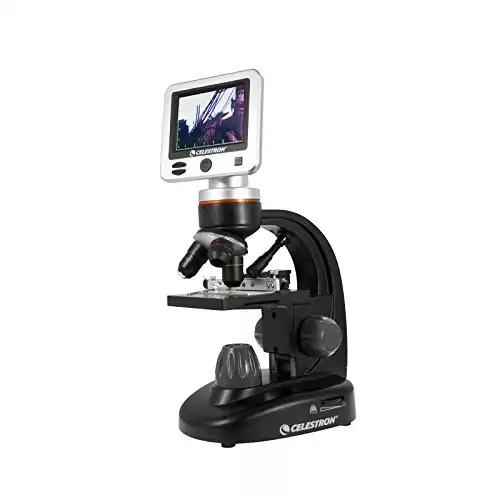
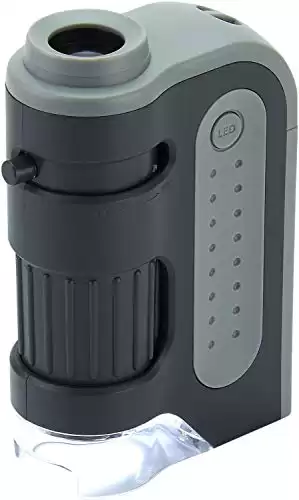
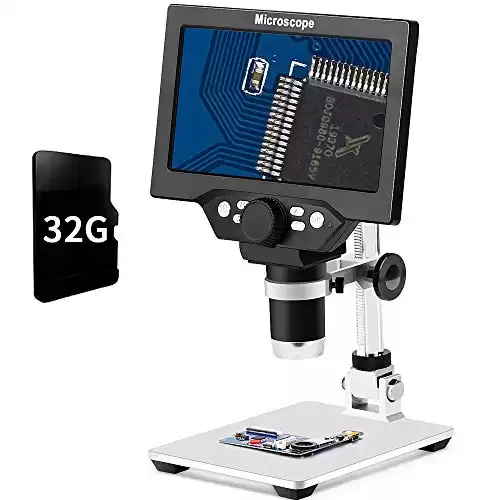
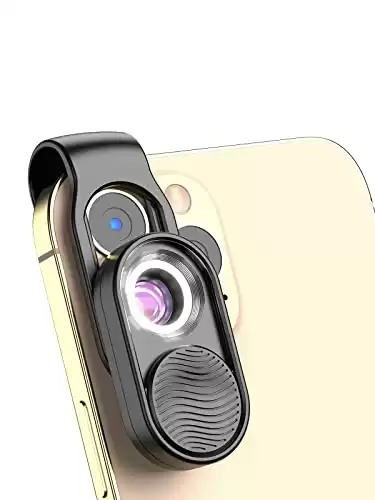
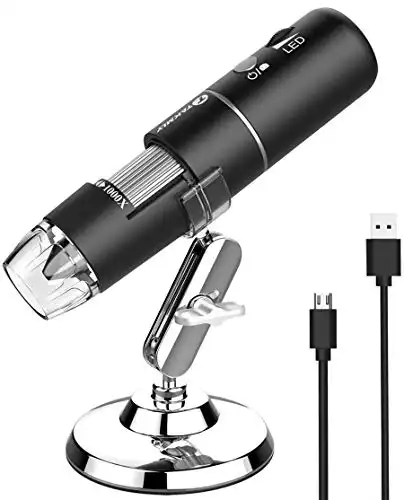




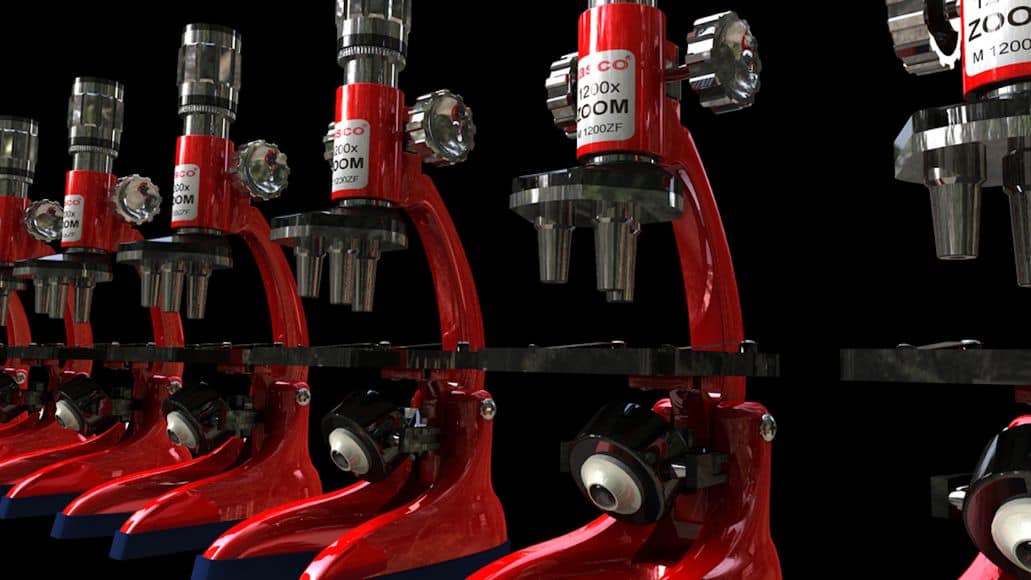

LOL, lab techs use 1000x to see blood cells, and it requires a parfocal microscope with oil immersion. Even 100x is far too much magnification to view trichomes. A real 30x loupe is plenty. Just be aware that the supposed magnifications of cheap Chinese loupes on Amazon are always exaggerated. Find one at a scientific or optical supply shop, or you will get ripped off. This site is just a shill site for Amazon crap.
I have one I purchased on Amazon, main lens is 30x, two smaller at 60x and 90x. Granted my eyes have been working for 65 years, I looked at trichomes today, using the 30x I can see the trichomes but not enough detail, at 60x I could see the clear or cloudy I was looking for. It’s cheap but it works, a bigger lens for the 60x would be nice. Good article, thanks.
IK. have purchased the small and inexpensive $13.00 hand held to inspect trichomes through their stages.Wow! Not an easy on field job since the slightest air movement will distort your view.This week I purchased the on the snaps on the iphone only to find that the camera’s own magnification was better than the supposed 100 power..I dont think one exists for true in field checking
It is very frustrating trying to see trichomes on the plant LOL.. With large magnifications, it is easy to lose the subject trichome in the scope view or become unfocused.
Anyone ever try jeweler’s lens?